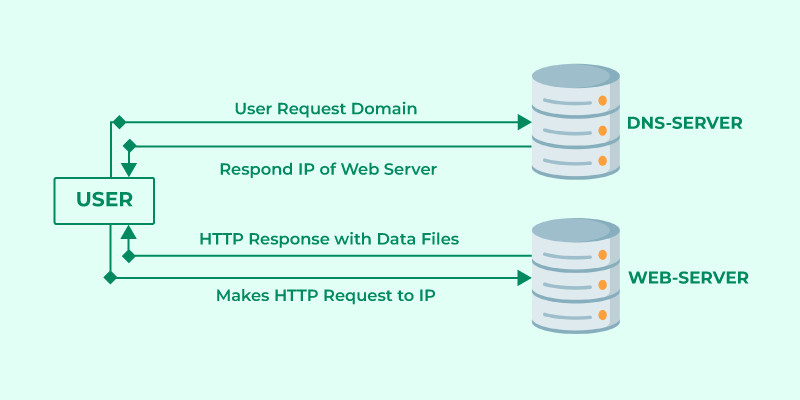The client-server architecture is a foundational concept in computer networking and distributed systems. It defines a structure where tasks are divided between service providers, known as servers, and service requesters, known as clients. This model is the backbone of many modern applications and online services, including email and the World Wide Web.
What is Client-Server Architecture?
At its core, the client-server architecture is about distributing workload. Imagine a restaurant: the customers (clients) place orders with the waiters, and the kitchen (server) prepares and serves the food. In the digital world, this interaction translates to computers communicating over a network.
- Client: A client is typically a computer or application that requests services or resources from a server. Clients are designed to initiate communication; they don’t share their own resources but rely on servers for data and processing. Web browsers, email applications, and online games are common examples of clients.
- Server: A server is a powerful computer or system designed to provide resources, data, or services to clients. Servers listen for requests from clients, process them, and then deliver the requested information. Web servers, database servers, and mail servers are different types of servers, each specialized for specific tasks.
The beauty of the client-server model lies in its dedicated roles. Clients request, and servers serve, streamlining processes and enhancing efficiency.
 Diagram illustrating the client server architecture model with client request and server response.
Diagram illustrating the client server architecture model with client request and server response.
How Client-Server Architecture Works?
To understand how this architecture functions, let’s break down the interaction when you use a web browser to access a website.
- URL Entry and DNS Request: You start by typing a website address (URL) into your browser. The browser then needs to find the server associated with this address. It begins by sending a request to a Domain Name System (DNS) server.
- DNS Server Lookup: The DNS server acts like an internet phonebook. It looks up the URL to find the corresponding IP address of the web server hosting the website.
- IP Address Response: The DNS server responds to your browser with the IP address of the web server.
- HTTP/HTTPS Request to Web Server: Armed with the IP address, your browser sends an HTTP or HTTPS request to the web server. This request is essentially asking the server to send the website’s files.
- Server Sends Website Files: The web server processes your request and sends the necessary files (HTML, CSS, JavaScript, images, etc.) back to your browser.
- Browser Renders the Website: Finally, your browser takes these files and renders them, using tools like the Document Object Model (DOM) interpreter, CSS interpreter, and JavaScript engine, to display the website on your screen.
This entire process, from entering a URL to seeing a webpage, exemplifies the client-server interaction in action.
Advantages of Client-Server Architecture
The client-server model offers several key advantages:
- Centralized Management: Data and resources are stored centrally on servers, making management and updates more efficient. This centralization also enhances security and control over data.
- Cost-Effectiveness: By centralizing resources, organizations can reduce costs associated with hardware and software maintenance. Data recovery and backups are also simplified in a centralized system.
- Scalability: Client-server architectures are highly scalable. The capacity of servers can be upgraded independently of clients, allowing the system to handle increased loads and more clients without overhauling the entire infrastructure.
- Specialized Servers: Servers can be specialized for specific tasks, such as web serving, database management, or email services. This specialization leads to better performance and efficiency for each service.
Disadvantages of Client-Server Architecture
Despite its benefits, the client-server model also has drawbacks:
- Server Dependency: The system’s reliance on servers means that if a server fails, services can be disrupted for all connected clients. This single point of failure is a critical concern.
- Security Risks: Servers are attractive targets for malicious attacks. If a server is compromised, it can expose sensitive data and potentially affect many clients. Denial of Service (DoS) attacks are also a significant threat to servers.
- Network Congestion: High traffic can lead to network congestion, slowing down data transfer between clients and servers. This is particularly relevant in scenarios with many clients accessing a single server simultaneously.
- Data Vulnerability: Data transmitted over networks can be intercepted or modified. Security measures like encryption (HTTPS) are essential to protect data during transmission and against threats like Man-in-the-Middle (MITM) attacks and phishing.
Conclusion
Client-server architecture is a cornerstone of modern computing, providing a structured approach to network communication and resource sharing. It offers significant advantages in terms of centralization, cost, and scalability. However, it’s crucial to be aware of its limitations, particularly around server dependency and security vulnerabilities. As technology evolves, especially with the rise of cloud computing, the client-server model continues to adapt and remain a vital part of the digital landscape.
